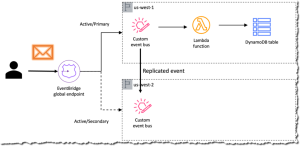
Soleio is a software designer turned investor. As a former fund manager and now angel investor, he has backed some of the most successful tech startups of the last few years including Figma, Vanta, and Vercel.
Soleio has a background in design, including work at Facebook and Dropbox where he led early design efforts. I spoke to him about his experiences designing for the early web, how successful technology companies approach design, his involvement with Figma and Vercel, and how a career in software design led to a career in investing.
 Soleio
Soleio
Soleio
Matthew Tyson: As a programmer, I have to admit that design is something of a dark art to me. I know good design when I encounter it, and I can build all of the logical structures to back it, but that’s it. Can you tell me what a developer should know about good design and how you developed a passion for it?
Soleio: Sure thing. I got my start over my high school summers as an intern working on an alumni magazine. That job introduced me to desktop publishing—the end-to-end process of coming up with content, producing visual and written media, then editing and laying it all out for print.
Later in college I parlayed that work experience into web development thanks to a borrowed copy of Macromedia Dreamweaver, a tool that introduced website creation to designers familiar with desktop publishing. I fell in love with creating things for the internet and spent my nights and weekends teaching myself HTML, Flash, and later CSS, JavaScript, and PHP.
My passion for design sprang from studying and reverse-engineering the work of other people designing web experiences. People like Joshua Davis and Dan Cederholm.
In particular, I was fascinated with the emergence of web apps. At the time, it seemed that distributing software via the browser was going to be the next big phase of consumer technology. After Google announced Gmail, one of the earliest examples of this transition, I decided to move to San Francisco to try my hand at being an independent designer and developer.
Tyson: You did a lot of early design at Facebook. What was it like being part of that watershed moment for the web?
Soleio: Facebook was the first social media startup to see itself primarily as a technology company. As such, we focused on hiring very technical people. This included the early designers there, all of whom wrote production code and contributed directly to building the early products.
Our work as designers spanned the entire product development cycle from conceptualizing and prototyping early ideas, through creating and coding up features. We would often jump between product strategy and architecture discussions to fine-tuning the visual UI design to owning core aspects of front-end development. To my knowledge, we were the first startup to use the term “product design” in the context of creating software.
Our view was that to be relevant in a fast and highly technical culture like Facebook’s, the design team had to work closely with engineering to help everyone move faster. I didn’t fully appreciate how unusual that approach was back when it was far more commonplace for teams to follow a waterfall method to product development.
We were designers who could ship.
Tyson: After Facebook you worked at Dropbox, kind of moving up to managing the design efforts. What was your transition to management like?
Soleio: It was a choppy transition, to be honest. When I started at Dropbox full-time, I was joining a startup that had already existed for four years. They had a pre-existing culture and approach to product development and design.
Moreover, Dropbox’s commercial success was a result of a very different value proposition to consumers. People paid Dropbox to keep their most valuable digital files safe. No one wanted to hear about “move fast and break things” in that context—neither customers nor employees!
This new work environment forced me to confront some long-held assumptions about what drove the success of Facebook’s design culture and to carefully consider what we needed to foster at Dropbox by comparison. It also meant I needed to adapt to a team that adhered to a different set of values and sought leadership qualities that varied from what Facebook rewarded. I had to navigate when to discard my prior experiences and when to stick to my guns.
In all, it was a period of rapid personal growth and development. We made Dropbox an attractive place for designers to join, and we built an industry renowned team. If I made a list of all the people who designed for that company, it would contain a who’s who of industry talent.
My experience at Dropbox led me to a more general theory of what makes design teams and startups successful.
Tyson: I believe your first move into investing was with Figma, where you invested and acted as an advisor. Was that as an angel?
Soleio: My start as an investor actually began the year I left Facebook. Shortly after my departure, I was approached by a cohort of friends and colleagues who had also left the company and needed help recruiting designers for their own startups. They all had the same question: How did Facebook do such a great job of hiring software designers?
Naturally I had strong opinions on the matter because of all the time and energy I had put towards design recruiting in my last few years there. Design hiring became as critical to the company’s success as product development. Along the way I discovered a passion for talent-spotting—finding exceptional designers in unexpected places and persuading them to join Facebook.
Little did I know, my conversations with these new founders on how to build great design teams led to the second act of my career: partnering with startups as an investor and advisor. In fact, Dropbox was among my earliest investments. Advising that team eventually led to me joining full-time as head of design at the end of 2012.
So what about Figma? Fast forward to 2014… I had the chance to host Dylan Field at Dropbox headquarters for a conversation over lunch about his startup, which was still in stealth. Dylan was introduced to me by Dropbox coworker and Dylan’s college classmate Ryan Kaplan.
Dylan brought his laptop with him to the cafeteria and walked me through some zany WebGL demos before showing me the earliest prototypes for their new product—a collaborative, web-based design editor.
I remember that conversation vividly because a couple of things locked into place in my head as Dylan described their plans.
First, I was personally grappling with the challenge of managing a large team that used two different tools for creating and managing design assets, Photoshop and the fledgling Sketch app. This dichotomy led to a lot of redundant and costly work.
Second, I felt that both Photoshop and Sketch were fundamentally single-player tools and thus didn’t reflect how design was actually done, which is collaboratively, as a team sport. Multiple designers often worked together in small teams on shared projects.
Figma solved both of these problems by using the modern web browser to power a real-time, multiplayer experience that was more easily available to people who worked with designers in addition to the designers themselves.
This was a consequential idea that wasn’t immediately obvious to most folks who made software. I believed Figma could lead a tool-driven revolution that would change how startups thought about and practiced design.
The Figma team still had a mountain of work ahead of them, but their ambition and strategy were too promising to ignore. I was lucky to join them as an investor and advisor later that year. I helped the co-founders with hiring and mentoring the early designers. I also advised the team on their initial product and go-to-market strategies—sometimes even playing the role of Figma’s first design evangelist.
My work with Figma cemented how I wanted to work with startups going forward. I decided to leave my full-time role at Dropbox and begin a new career path as a full-time investor. This felt like the right level of abstraction in which to have an impact on the field of design while supporting multiple teams at once.
Tyson: You are also an angel investor in Vercel. I am a big fan of Vercel. Every time I deploy an app to global infrastructure with one button click I smile in amazement. How did you come to work with them?
Soleio: Vercel is a happy example of how startup investing is primarily a relationships profession.
I first met Guillermo Rauch when Dropbox was in talks to acquire his previous startup Cloudup. His team came through our office for a round of interviews—but it felt as though they were evaluating us as much as we were evaluating them.
In our first conversation, Guillermo and I saw that we were remarkably aligned on product philosophy and design. He has impeccable taste, a strong bias for action, and a hacker’s mindset.
Unfortunately, Dropbox didn’t win that acquisition. But Guillermo and I agreed to remain in touch, and when he embarked on founding ZEIT (now Vercel) a few years later, I was thrilled to be one of his first angel checks.
I knew that Guillermo was a founder who both valued design and had a principled view on how to build software from his direct experiences as a developer. He’s a classic example of how clear thinking is often the precursor to great design and innovation.
Tyson: Startup investing is primarily a relationships profession—very interesting!
I have to ask now, what is your investing philosophy or approach? How do you identify and evaluate these great businesses?
Soleio: Even though I’m now 10 years into this line of work, I still feel as though I’m very early in my practice. So I reserve the right to evolve my thinking here!
These days I primarily care about hearing how founders think about their competitive strategy and how this strategy translates into a company roadmap. It requires founders to articulate both a sizable market opportunity and potential pathways to creating and capturing the lion’s share of value.
Some investors see this as an exercise in problem-finding and solution-building. But I see it more as an exercise in accumulating and wielding power.
A successful strategy can’t happen at the expense of customers or business partners, nor through sheer effort alone. At its heart, a competitive strategy must be a vision and a plan for long-term value creation in a dynamic world. A plan to win big that also takes full stock of one’s current capabilities and position in the market.
I think Richard Rumelt said it best when he wrote “a master strategist is a designer.”
Tyson: This tweet is a kind of call to arms about identity, design, and new online communities. Can you expand on it? Is there a hint toward a Web3 identity here?
Soleio: I have a working theory that more online communities would exist if people had easier access to alternative identities than their IRL selves. This is one of the big limiting factors for how ideas and relationships get formed today. The plain fact of the matter is that much of the world’s knowledge is still bound up inside closed communities. Increasing the number and access to online communities can have a tremendous effect on what we can learn and accomplish.
I see this less as a Web3 development and more of a natural evolution for the internet going forward—especially in the run-up to spatial computing (AR/VR) going mainstream. How we present in immersive, virtual worlds must look and function very differently from how we present in the real world.
I’m excited to have backed one particular startup that has a fascinating perspective on what sort of product experience might unlock this latent opportunity. I’ll share more when they’re ready to.
Tyson: I look forward to that. Thanks again!
Soleio: Thankee sai.
Copyright © 2022 IDG Communications, Inc.
Originally posted on August 30, 2022 @ 6:31 pm


